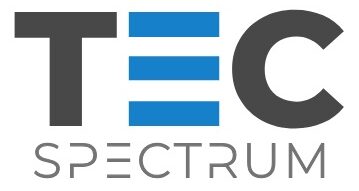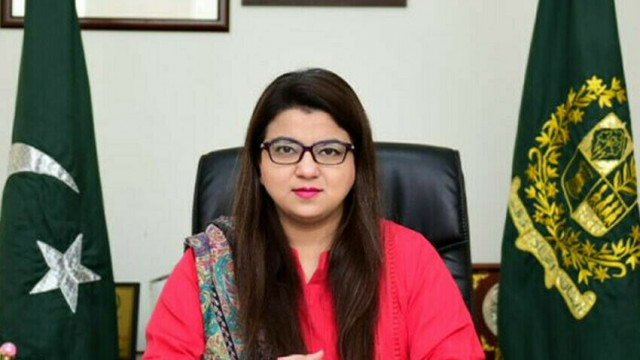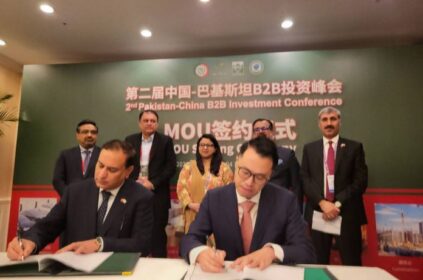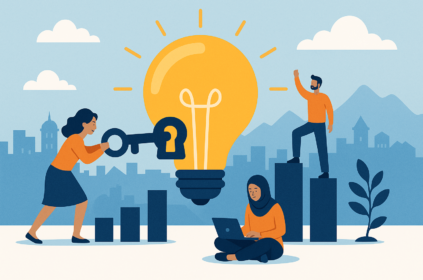Pakistan is on the cusp of a technological revolution, with ambitious plans to enhance digital connectivity and harness artificial intelligence (AI) for economic growth. At the World Artificial Intelligence Conference (WAIC) 2025 in Shanghai, Federal Minister for IT and Telecommunication, Shaza Fatima Khawaja, spearheaded discussions with top Chinese tech companies to advance Pakistan’s digital agenda. These meetings focused on two critical pillars: AI and fibre-optic collaboration, aiming to position Pakistan as a regional tech hub.
This article dives into the details of these high-level discussions, exploring how partnerships with Chinese tech giants like PeaceCable International Network and Shenlan Technology are set to reshape Pakistan’s digital infrastructure, foster AI innovation, and empower its youth. Whether you’re a tech enthusiast, policymaker, or investor, this guide offers insights into Pakistan’s bold steps toward a Digital Pakistan.
Strengthening Digital Connectivity Through Fibre-Optic Infrastructure
Partnering with PeaceCable International Network
One of the standout meetings at WAIC 2025 was with PeaceCable International Network, a global leader in submarine and terrestrial fibre-optic solutions. Led by CEO Sun Xiaohua and Sales Director Zhuang Wei, PeaceCable showcased its impressive $24 billion portfolio in submarine cables, fibre-optic networks, and power solutions.
The discussions centered on enhancing Pakistan’s digital connectivity through advanced fibre-optic infrastructure. Minister Khawaja outlined Prime Minister Shehbaz Sharif’s vision for a Digital Pakistan, emphasizing the National Fiberisation Policy. This policy sets ambitious targets, including:
- Connecting 10 million homes to fibre broadband within three years.
- Increasing fiberised mobile towers from 14% to 60%.
- Expanding Fibre-to-the-Home (FTTH) and Optical Distribution Network (ODN) markets.
Khawaja urged PeaceCable to invest in Pakistan’s FTTH rollout, terrestrial fibre projects, and ODN infrastructure. She assured the delegation of full support from the Ministry of IT and Telecom (MOITT), highlighting Pakistan’s investor-friendly policies and growing digital market.
Why Fibre-Optic Infrastructure Matters
Fibre-optic networks are the backbone of modern digital economies. Unlike traditional copper cables, fibre-optics offer:
- High-speed internet: Enabling seamless streaming, gaming, and cloud computing.
- Reliability: Resistant to weather disruptions and electromagnetic interference.
- Scalability: Supporting future technologies like 5G and IoT.
By partnering with global leaders like PeaceCable, Pakistan aims to bridge the digital divide, ensuring rural and urban areas alike benefit from high-speed connectivity. This aligns with the broader goal of making Pakistan a competitive player in the global tech landscape.
External Link: Learn more about the importance of fibre-optic networks from Ericsson’s guide to fibre infrastructure.
Pioneering AI Innovation for Pakistan’s Future
AI Skills Exchange Program for Pakistani Youth
In a separate meeting, Minister Khawaja engaged with a Chinese delegation led by Cheng Dong of the All-China Federation of Returned Overseas Chinese. The delegation included representatives from Shenlan Technology, Zhangjiang High-tech City Medical Innovation Research Institute, and other prominent organizations.
A key outcome of this meeting was the proposal for an AI skills exchange program aimed at empowering Pakistani youth. This initiative would provide training in cutting-edge AI technologies, equipping young professionals with skills in:
- Machine learning and deep learning.
- Data analytics for smart city solutions.
- AI-driven medical research and diagnostics.
This program aligns with Pakistan’s goal of fostering a tech-savvy workforce capable of driving innovation in health tech, edtech, and fintech. By collaborating with Chinese tech leaders, Pakistan can tap into global expertise while nurturing local talent.
AI-Powered Tools and Smart Maintenance Machinery
The Chinese delegation also proposed introducing AI-powered tools and smart maintenance machinery to Pakistan. These technologies could revolutionize industries such as:
- Manufacturing: Automating processes with AI-driven robotics.
- Infrastructure: Using smart machinery for efficient maintenance of roads, bridges, and utilities.
- Healthcare: Leveraging AI for diagnostics and predictive analytics.
For instance, Shenlan Technology’s expertise in AI could support Pakistan’s smart cities initiative, integrating IoT and data analytics to optimize urban planning, traffic management, and energy efficiency.
Internal Link: Check out our article on How AI is Transforming Smart Cities for more insights.
Collaborative Ventures in Health Tech, Edtech, and Fintech
The discussions at WAIC 2025 extended beyond infrastructure and AI skills to include joint ventures in high-growth sectors. The Chinese delegation expressed interest in partnering with Pakistan’s National IT Board to develop digital solutions in:
- Health Tech: AI-driven diagnostics, telemedicine platforms, and medical research collaborations with institutions like Zhangjiang High-tech City Medical Innovation Research Institute.
- Edtech: Online learning platforms powered by AI to enhance education accessibility.
- Fintech: Blockchain and AI-based financial solutions to boost financial inclusion.
These collaborations could accelerate Pakistan’s digital transformation by leveraging China’s expertise in these fields. For example, AI-powered fintech solutions could empower unbanked populations in rural Pakistan, while edtech platforms could provide affordable education to millions.
Pakistan’s National Fiberisation Policy: A Game-Changer
The National Fiberisation Policy is a cornerstone of Pakistan’s digital strategy. Announced as part of Prime Minister Shehbaz Sharif’s vision, the policy aims to:
- Expand broadband access: Ensuring 10 million homes have fibre-optic connectivity by 2028.
- Upgrade mobile infrastructure: Increasing fiberised mobile towers to 60% to support 5G rollout.
- Attract foreign investment: Encouraging companies like PeaceCable to invest in Pakistan’s digital ecosystem.
This policy addresses critical challenges, such as low internet penetration in rural areas and outdated telecom infrastructure. By prioritizing fibre-optic networks, Pakistan is laying the foundation for a connected, digital-first economy.
Why These Collaborations Matter for Pakistan
The partnerships forged at WAIC 2025 signal Pakistan’s commitment to becoming a global tech player. Here’s why these collaborations are significant:
- Economic Growth: Investments in fibre-optic infrastructure and AI will create jobs and boost GDP.
- Global Competitiveness: Enhanced connectivity and AI innovation will position Pakistan as a regional tech hub.
- Youth Empowerment: AI skills programs will equip young Pakistanis for high-demand tech careers.
- Sustainability: Smart cities and AI-driven solutions promote efficient resource use and environmental sustainability.
By aligning with Chinese tech giants, Pakistan is leveraging global expertise to address local challenges, from digital access to workforce development.
Challenges and Opportunities Ahead
While the prospects of these collaborations are exciting, challenges remain. These include:
- Infrastructure Costs: Building fibre-optic networks requires significant investment.
- Skill Gaps: Scaling AI adoption demands a trained workforce.
- Policy Implementation: Ensuring the National Fiberisation Policy is executed effectively.
However, the opportunities outweigh the challenges. With government support, private-sector partnerships, and a young, dynamic population, Pakistan is well-positioned to achieve its digital goals.
Conclusion: A Bright Digital Future for Pakistan
The meetings at WAIC 2025 mark a pivotal moment for Pakistan’s digital transformation. By collaborating with Chinese tech giants like PeaceCable and Shenlan Technology, Pakistan is paving the way for a connected, AI-driven future. From fibre-optic networks to AI skills programs, these initiatives align with the vision of a Digital Pakistan, fostering economic growth, innovation, and global competitiveness.
As Pakistan embarks on this journey, the focus on AI and fibre-optic collaboration will be key to unlocking its potential. Stay tuned for more updates on Pakistan’s tech revolution and how it’s shaping the future.
CTA: Enjoyed this deep dive into Pakistan’s digital agenda? Subscribe to our newsletter for more tech insights or check out our article on The Future of 5G in Pakistan. Share your thoughts in the comments below!
















